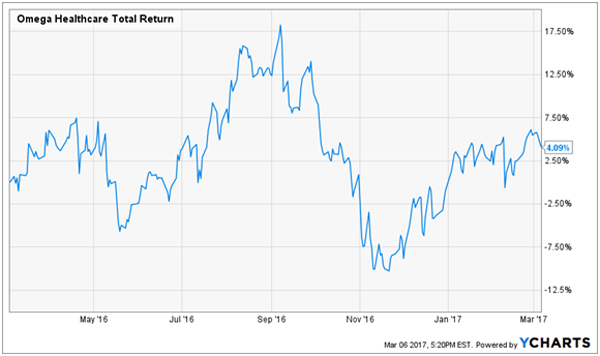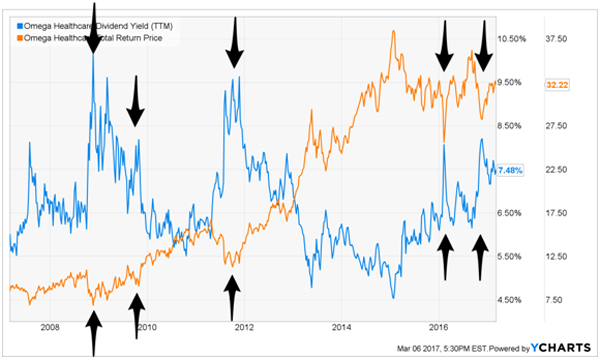Dividend stocks are different animals. If you practiced “buy and hope” in your previous investing life, there are some habits you should leave behind.
Using a “stop loss” is one of them. In theory, stop losses limit downside while letting winners run higher. If a stock closes below a certain price, or drops a certain percentage, the “stop” will make you sell before things get worse. Instead of holding a stock all the way to zero, you’re forced to book gains (or at least cut losses) early.
It sounds like a no brainer. Why wouldn’t we want downside protection on all of our positions?
Many advisors and pundits agree, and argue that a stop loss should always be used. Several subscribers have written in asking me where they should place their stops.
But that’s not the right question to ask, especially when it comes to out-of-favor dividend stocks. Here’s why.
Death By a Thousand Stops
Our Contrarian Income Report portfolio has outperformed the S&P 500 since inception (and crushed more relevant bond benchmarks) thanks to our two core principles:
- We buy stocks and funds when they are out-of-favor – so that prices are lower and yields are higher when we purchase.
- We rely on dividends alone for income – so that price ups and downs do not affect us. In fact, we use them in our favor.
Thanks to an 8-year old bull market, stocks are expensive. But as long as there are headlines, there will be headline worries. And thanks to them, whether real news or fake, we’re able to find pockets of value. Even today.
Contrarian investing may sound like an obvious way to find cool zones in an overheated market, but it’s not for everyone. Temporary drawdowns of 10% or more happen more frequently than folks expect, even when it comes to high payers. And many investors don’t know how to handle losses, even when they are limited to the paper variety.
Take Omega Healthcare Industries (OHI), which pays an impressive 7.6% dividend. The firm’s payout is well covered at just 70% of funds from operations (FFO) – anything below 85% or 90% is fine for a REIT – so you might expect the big dividend to anchor the stock price. If so, you’d be wrong – this payout battleship saw 10%+ drawdowns twice over the past twelve months!
No Matter the Dividend, Investors are Still Crazy

Even a big 25% trailing stop loss would have tricked you into selling OHI at its November lows. The worst possible moment to sell.
While stops can certainly help traders hoping to catch the meat of a trend, they bury many dividend investors with a thousand cuts. The argument for stop losses is based on the “wisdom” of prices. If the market knows something we don’t, then it’s best for us to respect that knowledge. Problem is, the market is pretty dumb when it comes to dividend analysis!
We’re better off asking ourselves: “Is the dividend safe?” If we believe it is, we should take advantage of any pullback to buy more when prices are low and yields are high.
Let’s leave the stops for the trend followers and buy and hope types. And we can even take this concept one step further with an incredibly simple way we dividend investors can time our stock purchases. This technique works for the same reasons that stops don’t – because prices are more erratic than they should be.
How to Time Your Dividend Stocks
It may be difficult to time the market, but it’s actually easy to time individual dividend stocks. We simply buy them when their yields are higher than usual – the more out of whack, the better.
Let’s consider OHI again. Its business (nursing homes) is quite stable. Future prospects usually look good thanks to demographic trends. Cash flows and dividends steadily grow over time.
But you’d never guess it if you looked at its ticker day-to-day! In the short term, the stock is always getting bounced around by interest rate worries or healthcare reimbursement concerns.
Over the long run, this noise fades away. Investors who ignored stop losses enjoyed 297% returns over the last decade.
And some did even better. Check out the chart below, and you’ll see that OHI’s yield (blue line) spanned a wide range. The stock paid as little as 4.5% and as much as 10% at various points in time. Anyone who “backed up the truck” when the stock paid 7.5% or better – as it does today – really did well:
Buy OHI When Yield is 7.5%+

9 More Secure Stocks That Pay 7%+ Dividends
If you think OHI pays a big dividend, there are nine more stocks and funds available today that pay reliable yields of 8% or higher.
These issues even have some price upside to boot because, as with OHI, their yields are higher than usual. These firms also have incredibly stable, rising cash flows that power their secure dividends – but their stock prices are a bit more volatile than they should be in the short term, hence the current opportunity for us.
I’m talking specifically about funds and stocks that have market caps between $1 billion and $10 billion. They’re plenty liquid enough for you and me, but not for the big institutional investors that hold two-thirds of all shares in public stocks. Combined they make up only a fraction of the stock market’s total capitalization – so they don’t get much coverage from the financial media.
And that makes these ignored corners of the financial markets ideal places for us to bank secure 8% yields, so that we can actually live off dividend income alone!
In fact these nine ideal investments can have you thinking about retirement with a little as $500,000 in your portfolio. Click here for the details about my favorite 8% plays in funds, preferreds and REITs – and I’ll share the names, tickers and buy prices with you, too.
